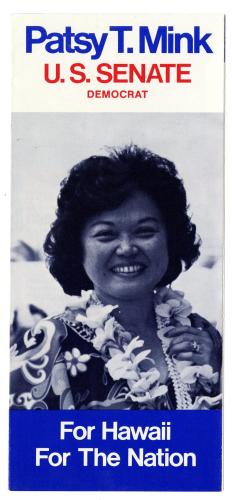
Patsy T. Mink U.S. Senate for Hawaii for the Nation Leaflet. National Museum of American History.
By Healoha Johnston of the Smithsonian Asian Pacific American Center and Sara Cohen of Because of Her Story
May marks Asian American and Pacific Islander Heritage Month. Our Smithsonian collections include a variety of objects that represent notable Asian American and Pacific Islander women. Here are nine photos, songs, videos and other objects that highlight 12 women to know.
1. Patsy Mink
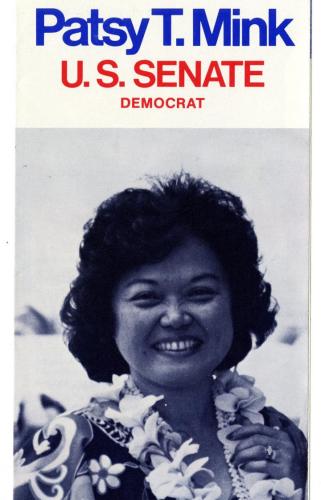
In 1964, Patsy Mink became the first woman of color elected to the U.S. House of Representatives. Her Congressional career spanned decades (1964–1977; 1990–2002). She was a key author for Title IX, a law that advanced gender equity within federal funding policies for education. This law was later renamed the Patsy T. Mink Equal Opportunity in Education Act in her honor.
Our National Museum of American History collected this leaflet from her 1977 campaign. In the leaflet she says, "I have been guided by a single principle: That everyone—rich or poor, powerful or weak—should get fair and equal treatment from government."
2. Muna Tseng
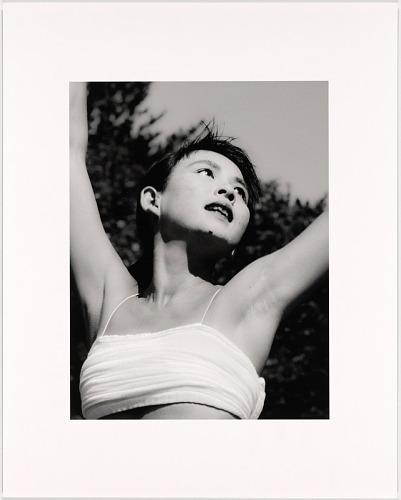
Muna Tseng works as a choreographer, performer, and founder of Muna Tseng Dance Projects Inc. Born in Hong Kong, she started classical Asian dance classes around age seven. Her work as a choreographer incorporates a mix of ballet, American modern dance, and elements of Chinese, Japanese, and Korean dance traditions. In 1977, she and her brother, photographer Tseng Kwong Chi, moved to New York. When Tseng Kwong passed away in 1990 due to AIDS-related causes, Muna became an advocate, archivist, and estate manager of his work. Today, this portrait of Muna Tseng and photos by Tseng Kwong Chi are in our National Portrait Gallery.
3. Hina Wong-Kalu, Isabella Borgeson, Kayla Briët, and Wang-Ping Oshiro
Hina Wong-Kalu, Isabella Borgeson, Kayla Briët, and Wang-Ping Oshiro are educators, artists, and community organizers. They are featured in director Jess X. Snow's documentary short film AFTEREARTH. In AFTEREARTH, these four women fight to preserve the land for future generations. Wong-Kalu, Borgeson, Briët, and Oshiro use art and activism to address environmental issues and produce positive change. Though each comes from a different cultural background, they all apply their own ancestral knowledge in their work. You can watch AFTEREARTH for a limited time in our Smithsonian Asian Pacific American Center's digital Care Package.
4. Christine Sun Kim
Christine Sun Kim explores sound in her drawings, performance, and installation work. She uses art to advocate for Deaf culture and make connections between linguistics, music, and American Sign Language (ASL). She explained on The World radio program how signing is empowering, "I truly believe American Sign Language is important because from the beginning, when a child is born, if they learn ASL, they have full access to information." Kim recently participated in our Hirshhorn Museum and Sculpture Garden's Artist Diaries program. In this video she talks about what it's like making art during the current global pandemic.
5. Jhumpa Lahiri
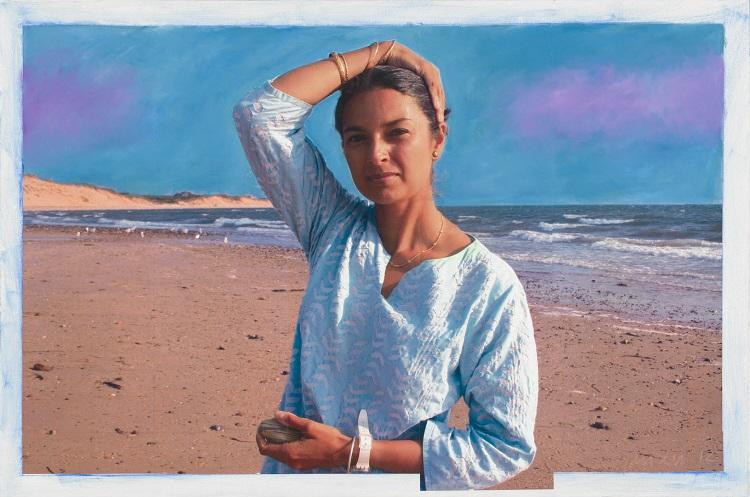
Author Jhumpa Lahiri won the Pulitzer Prize in 2000 with her debut short story collection, The Interpreter of Maladies. Born in London to Bengali parents, Lahiri moved to Rhode Island at age three. As a child she was inspired by her grandfather's stories of India, and her father's extensive book collection. Her career as an author is informed by these memories and experiences in storytelling. In this collage from our National Portrait Gallery, artist Raymond Elman portrays Lahiri by the sea in Cape Cod.
6. Toshiko Takaezu
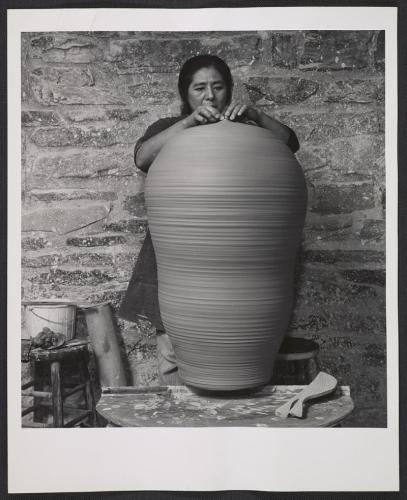
Toshiko Takaezu was a trailblazer in ceramic art-making during the 1970s. She is best known for creating large, closed-vessel sculptures. At the time, fellow artists expressed shock that a woman could make such large pieces, some taller than the artist herself. Takaezu merged aspects of Japanese tea ceremony, calligraphy, and American Abstract Expressionism to create a new style from these diverse art traditions. She had a long career as an artist and teacher at the Cleveland Institute of Art and Princeton University. Our Archives of American Art holds her papers.
7. Chien-Shiung Wu
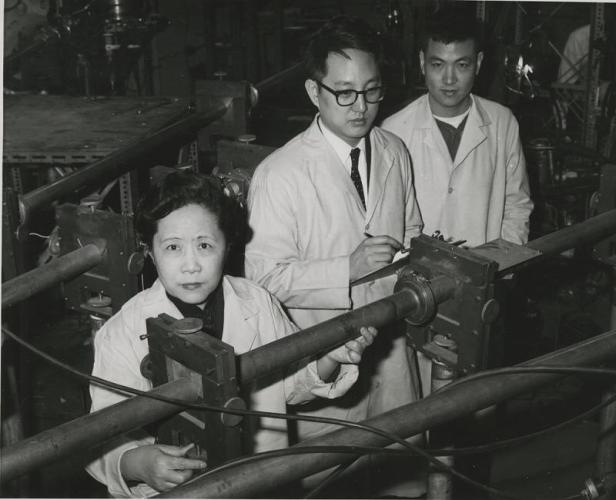
Chien-Shiung Wu was a leader in experimental physics. Wu emigrated from China in 1936 to earn a Ph.D. at the University of California, Berkley. Anti-Asian prejudice in California made it difficult to find West Coast work, but Wu secured positions at several universities on the East Coast. This photo from our Smithsonian Institution Archives shows Chien-shiung Wu working at Columbia University with physicists Y.K. Lee and L.W. Mo. Wu and her team's experiments confirmed the theory of subatomic particle behavior known as "weak interaction."
8. Mona Haydar
Syrian American poet and rapper Mona Haydar is best known for her first music video, "Hijabi" (2017). The song responds to questions and comments frequently received by women who cover their heads. Billboard named the song one of the top 25 feminist anthems of all time. Our Cooper Hewitt, Smithsonian Design Museum features her song as part of their Contemporary Muslim Fashion exhibition.
9. Emily Kauʻiomakaweliokauaionalaniokamanookalanipo Kukahiwa Zuttermeister
Emily Kauʻiomakaweliokauaionalaniokamanookalanipo Kukahiwa Zuttermeister, also known as Aunty Kauʻi, is a revered Kumu Hula (master hula teacher) from Hawaiʻi. She trained in the hula pahu tradition of Samuel Pua Haʻaheo before becoming a teacher in 1935. Zuttermeister helped revitalize ʻŌlelo Hawaiʻi (Hawaiian language) and culture by teaching hula. She was part of a community of leaders who raised awareness about hula as a storytelling art form created by the Hawaiian people to recall and share their knowledge. On our Smithsonian Folkways website you can listen to her perform mele pahu (chanted prayers) in the oli (chant) style.
Related Posts
- Marine Botanist Isabella Aiona Abbott and More Women to Know this Asian American and Pacific Islander Heritage Month
- Curator Healoha Johnston Connects Asian Pacific American History to our Present
- Writing Asian American and Pacific Islander Women Back into History with Wikipedia
- Queen Liliʻuokalani: Hawaiʻi's Only Reigning Queen
Healoha Johnston is the curator of Asian Pacific American women's cultural history at the Smithsonian Asian Pacific American Center. Johnston's research explores connections between historic visual culture and contemporary art to understand the contemporary experience.
Sara Cohen is the digital audiences and content coordinator for Because of Her Story, the Smithsonian American Women's History Initiative. She shares lesser-known histories of women through this website, the Because of Her Story newsletter, and Smithsonian social media.